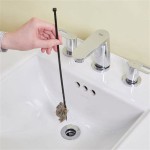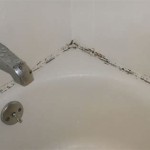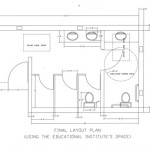Essential Aspects of Bathroom Sink Plumbing Trap
A plumbing trap, also known as a P-trap, is an essential component of bathroom sink plumbing. It plays a crucial role in preventing sewer gases, odors, and pests from entering the bathroom by creating a water seal in the drain line. Understanding the function and maintenance of your bathroom sink's plumbing trap is important for efficient drainage and a healthy indoor environment.
Function of a Plumbing Trap
The primary function of a plumbing trap is to prevent sewer gases and odors from escaping into the bathroom. When water flows down the drain, it fills the lower loop of the trap, creating a water seal. This water seal acts as a barrier between the drainpipe and the bathroom air, effectively blocking the passage of foul odors. Additionally, the trap prevents pests and insects from entering the home through the drain line.
Different Types of Plumbing Traps
There are various types of plumbing traps available, each designed for specific applications. The most common types include:
- P-trap: The most widely used type, shaped like the letter "P."
- S-trap: Similar to a P-trap but with a slightly different shape.
- Drum trap: Larger and more decorative, often used in older homes.
- Bottle trap: Used in situations where space is limited.
Maintenance and Troubleshooting
Regular maintenance is essential to ensure the proper functionality of your bathroom sink's plumbing trap. Here are some tips:
- Check for clogs: Clogs can prevent water from flowing properly, leading to slow drainage and potential drain backup. Use a drain cleaner or a plunger to remove any clogs.
- Inspect for leaks: Look for any visible leaks around the trap or its connections. Tighten any loose nuts or bolts to stop leaks.
- Remove debris: Over time, debris such as hair, soap scum, and other materials can accumulate in the trap and cause blockages. Remove this debris regularly to maintain proper drainage.
Replacement Considerations
Plumbing traps can develop problems over time, such as corrosion, damage, or leaks. In such cases, replacement may be necessary. Consider the following factors when replacing a plumbing trap:
- Material: Plumbing traps are typically made from plastic, metal, or brass. Choose a material that is durable and resistant to corrosion.
- Size: Ensure the new trap is the appropriate size for your sink drainpipe.
- Shape: Select a trap that fits the available space and the specific needs of your bathroom sink.
By understanding the essential aspects of bathroom sink plumbing traps, you can ensure efficient drainage, prevent odors and pests, and maintain a healthy indoor environment. Regular maintenance and proper replacement can extend the lifespan of your plumbing system and avoid costly repairs in the future.

What Is A P Trap Family Handyman

Simple Drain 1 25 In Rubber Threaded P Trap Bathroom Single Sink Kit 3ea 1v2 Tc0 The Home Depot

Bathroom Sink Plumbing Installation Diy Montreal

Simple Drain 1 25 In Rubber Threaded P Trap Bathroom Single Sink Kit 3ea 1v2 Tc0 The Home Depot

Bathroom Sink Drains Plumbing Replace

Bathroom Sink Plumbing Installation Diy Montreal

How To Unclog A Bathroom Sink Hana S Happy Home

How To Install The P Trap Under A Sink Dummies

Snappytrap Universal Drain Kit For Bathroom Sinks Dk 105 The Home Depot

Vanity P Trap Drains To The Floor Google Search Diy Plumbing Bathroom Sink Repair
Related Posts







